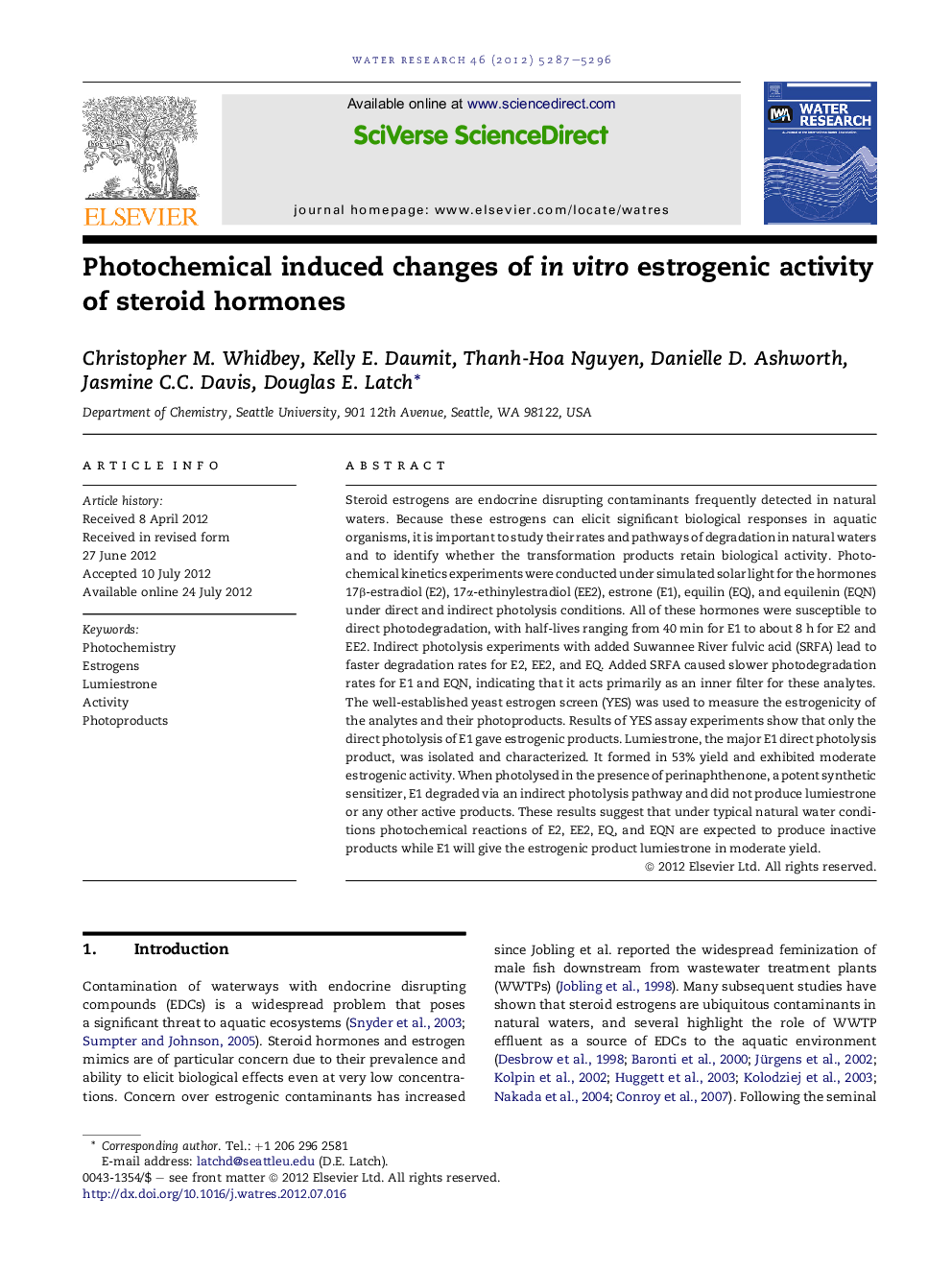| Article ID | Journal | Published Year | Pages | File Type |
|---|---|---|---|---|
| 4482755 | Water Research | 2012 | 10 Pages |
Steroid estrogens are endocrine disrupting contaminants frequently detected in natural waters. Because these estrogens can elicit significant biological responses in aquatic organisms, it is important to study their rates and pathways of degradation in natural waters and to identify whether the transformation products retain biological activity. Photochemical kinetics experiments were conducted under simulated solar light for the hormones 17β-estradiol (E2), 17α-ethinylestradiol (EE2), estrone (E1), equilin (EQ), and equilenin (EQN) under direct and indirect photolysis conditions. All of these hormones were susceptible to direct photodegradation, with half-lives ranging from 40 min for E1 to about 8 h for E2 and EE2. Indirect photolysis experiments with added Suwannee River fulvic acid (SRFA) lead to faster degradation rates for E2, EE2, and EQ. Added SRFA caused slower photodegradation rates for E1 and EQN, indicating that it acts primarily as an inner filter for these analytes. The well-established yeast estrogen screen (YES) was used to measure the estrogenicity of the analytes and their photoproducts. Results of YES assay experiments show that only the direct photolysis of E1 gave estrogenic products. Lumiestrone, the major E1 direct photolysis product, was isolated and characterized. It formed in 53% yield and exhibited moderate estrogenic activity. When photolysed in the presence of perinaphthenone, a potent synthetic sensitizer, E1 degraded via an indirect photolysis pathway and did not produce lumiestrone or any other active products. These results suggest that under typical natural water conditions photochemical reactions of E2, EE2, EQ, and EQN are expected to produce inactive products while E1 will give the estrogenic product lumiestrone in moderate yield.
Graphical abstractFigure optionsDownload full-size imageDownload high-quality image (178 K)Download as PowerPoint slideHighlights► We report the photochemical degradation behavior of five estrogenic hormones. ► All of the studied hormones were photolabile. ► Photoproducts were generally inactive, with the notable exception of the estrone direct photolysis product lumiestrone. ► Lumiestrone was formed in 53% yield and exhibited mild estrogenicity.
